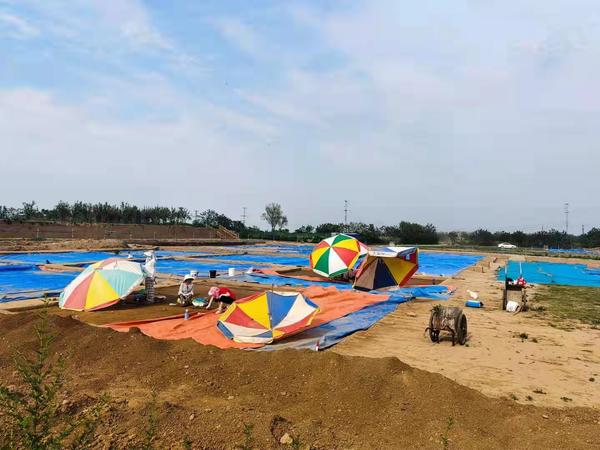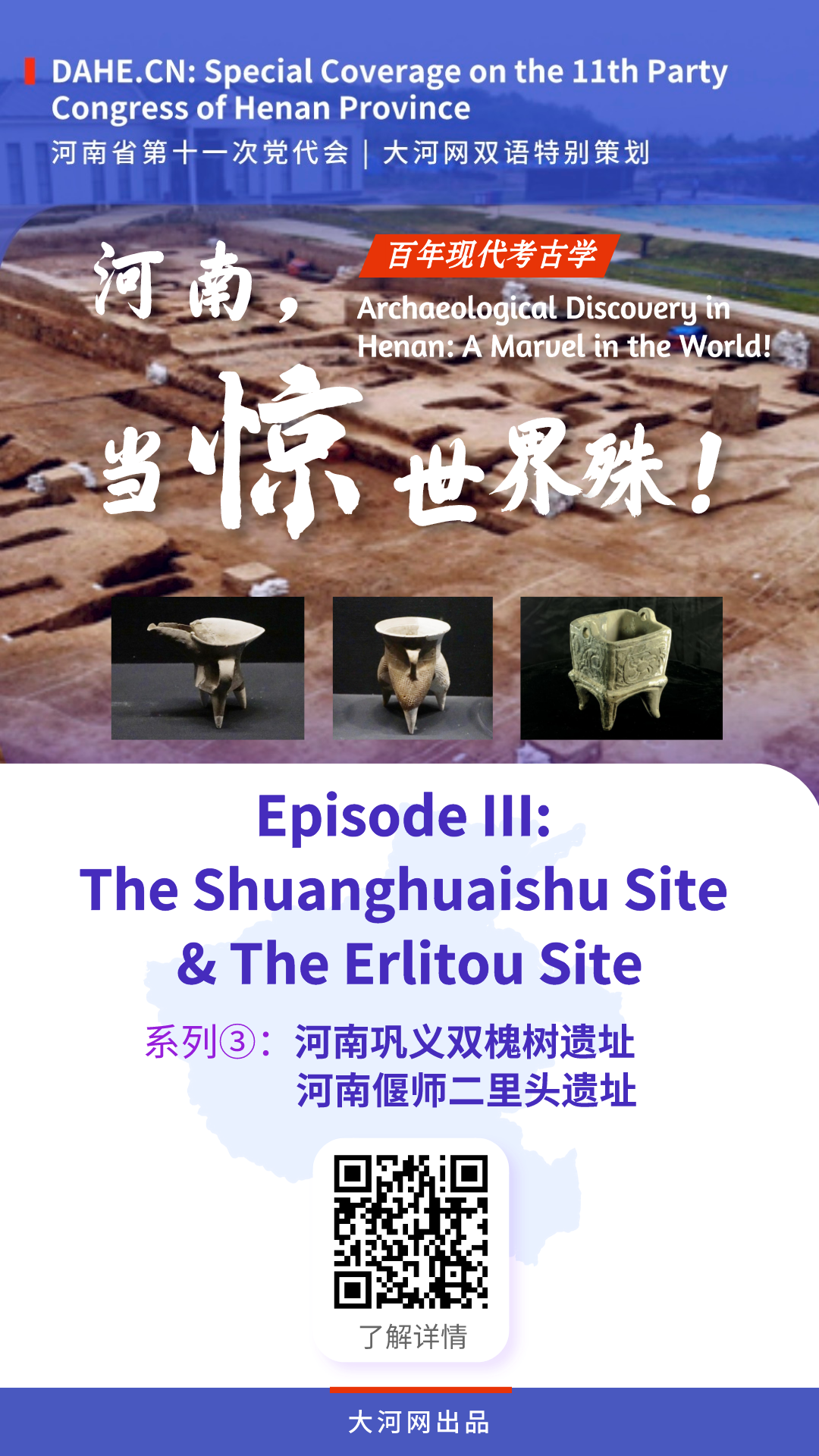Henan province has 14 items listed among the recent-concluded selection of "China's 100 Major Archaeological Discoveries in Last 100 Years", ranking 1st nationwide.
As the 11th Party Congress of Henan Province approaches, we are launching the Archaeological Discovery in Henan: A Marvel in the World series featuring 7 bilingual stories about Henan's 14 items in "China's 100 Major Archaeological Discoveries in Last 100 Years" to demonstrate Henan's long history and rich culture.
Here is the 3rd episode: The Shuanghuaishu Site & The Erlitou Site.
Click on the video above
Unveiled in the south of Shuanghuaishu village in the township of Heluo, the Shuanghuaishu Site is locatedon the eastern edge of the Loess Plateau, with the Yellow River 2 kilometers to its north and the Yiluo River 4 kilometers to its west. Recognized as the embryo of early Chinese civilization by experts and scholars, the ancient "Heluo Kingdom" dating back to around 5,300 years ago was discovered at the Shuanghuaishu Site, which provided key proof of the origin of Chinese civilization.
The Shuanghuaishu Site. [Photo/dahe.cn]
The remains of three ring trenches, large building complex, large-scale residential compounds in the center, walls with the earliest Wengcheng (enclosure for defense outside a city gate) structure, 4 rigidly planned public graveyards and terraces for religious sacrifices from the middle and late stage of Yangshao Culture were found at the site.
According to Sun Yingmin, head of Henan Provincial Society of Cultural Heritage and Archaeology, judging from the existing remains, the palatial structures of the ancient "Heluo Kingdom" has directly influenced the layout design of the capitals during the Xia and Shang dynasties, such as the Taosi Site in Shanxi's Linfen city and the Erlitou Site in Henan's Luoyang city, and can be considered as the origin of ancient capital regulations.
The Shuanghuaishu Site was a "huge settlement" during the period from the mid and late stage of Yangshao Culture to the early Longshan Culture. It was the highest-levelpolitical and cultural centerand the only large-scale townsite of its time ever found along the middle and lower reaches of the Yellow River.
Dating back some 3,500 or 3,800 years, the Erlitou Site is one of the first six major sites of the Project for Tracing Chinese Civilization Origins in China.
Verified by archaeology and historical philology, Erlitou was not only the site of China's earliest capital, but also the largest one in the Xia Dynasty. The Erlitou culture, represented by the Erlitou Site, was the earliest "core culture" in China and all overEast Asia. Known as the "earliest China", Erlitou was the earliest sovereign state covering a broad area and established itself as the core and leader of the forming process of Chinese civilization.
Turquoise-inlaid Dragon-shaped Bronze Object. [Photo provided to dahe.cn]
For Zhao Haitao, who currently heads the archaeological team, the crisscross roads in the central area of the Erlitou Site are of the highest value and importance to the study on the Erlitou Site as the capital city of the Xia Dynasty. The layers of hard loess on the roads are often preferred by archaeologists because of their value of proof.
According to Zhao, there are at least 4 roads (2 vertical roads and 2 horizontal ones) in the central area of the Erlitou Site, each measuring 10-20 meters in width. The crisscross roads divide the ancient capital city into many square and regular grids with different functions, forming a multigrid layout.
The Erlitou Site is of great value to major research projects including the origin of Chinese civilization, the rise of state, the origin of cities, the construction of capitals and the customization of royal palaces. (Source: dahe.cn Translator: Zhao Hanqing Video & Poster: Wang Junyi Proofreader: Ding Lan)
Related reports
Special Coverage on Party Congress | Episode I: The Jiahu Site & The Peiligang Site
Special Coverage on Party Congress | Episode II: The Yangshao Site & The Miaodigou Site





